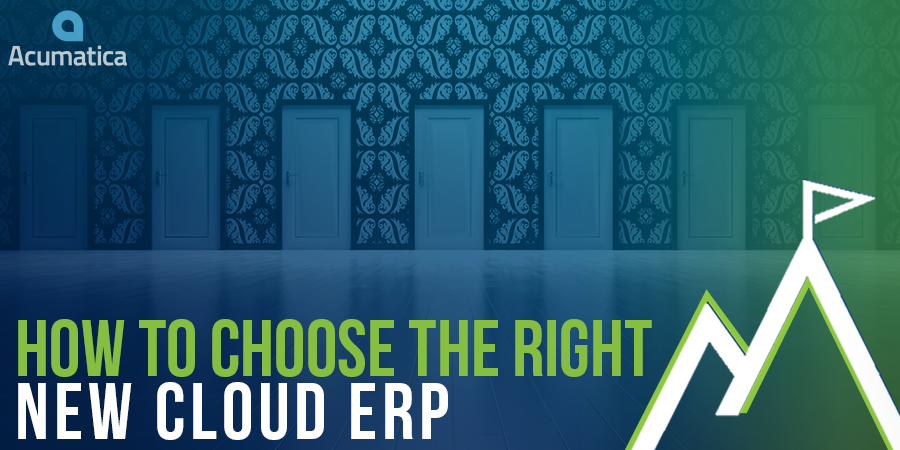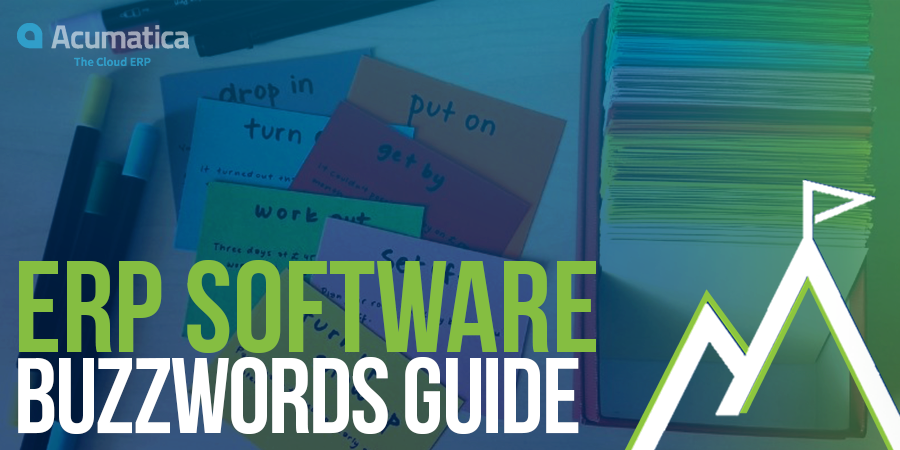3 min read
Decoding ERP Software Buzzwords: A Guide for Beginners
Buzzwords can be helpful within any industry to make our repetitive descriptions more efficient, but they don’t help people who aren’t familiar, or...

ERP selection can be overwhelming, from researching all the different products to evaluating demos and implementation consultants to see what tools and expertise are needed for your business. There is a staggering amount of information about cloud ERP software out there; it can be overwhelming before you even factor in the source (NetSuite's blog recommends NetSuite go figure). With all of this and more on your plate, where do you start? Here's some questions you need to ask yourself and some initial steps to take to make the right choice with your ERP selection process.
The first thing you need to ask yourself is, "why should I move to a new ERP system?" If you cannot come up with a compelling reason to change, you may be spending a lot of time, effort, and resources researching a new ERP system when your current one is working fine. Modern software can help "future-proof" your business, but the old adage "if it ain't broke, don't fix it" applies.
However, there are many good reasons to upgrade from a legacy ERP. The Milestone team hears one (or more!) of the following reasons every single day, from all kinds of businesses:
An often overlooked step in the process? Choosing your internal ERP software evaluation team. This may consist of anywhere between two and eight people who are invested in the successful implementation of a new system. Team members should be spread across the company so that all departments are represented.
Your internal evaluation team should discuss, and then each department will have their own unique needs. Consult with them to determine what their current system does well, and what the new system must also be able to do. It’s important not to assume that the new system (even a shiny new cloud ERP) will have all of the features and functionality your current system has, especially not out of the box. A good mantra:
"What do you have, what do you want, what do you need?"
Once you have your list of haves, wants, and needs from each department, it can also help to know the "business reasons" for each item, if it is not immediately clear.
Now for the some of the most important stuff: can we afford a new ERP? First, consider what your budget includes. If you're considering a hybrid solution (a cloud ERP with some on-premises functionality), you may need to upgrade or purchase new hardware, as well. It is difficult to estimate what an cloud ERP implementation costs, but typically implementation runs between 1/3 to 1/2 of the amount of the product itself in a traditional on-prem setup. In a SaaS (Software as a Service) model, you may be looking at 1/3 of the first-year cost of the ERP system subscription, depending on modules needed.
Most of the major ERP manufacturers (from Microsoft to Acumatica to Sage to Infor) don't sell directly to consumers; they utilize channel partners called VARs ("Value-Added Resellers"). You will most likely be working with one to purchase and complete your software implementation, but that's a good thing! Imagine summiting Everest without a Sherpa - no matter how experienced your team is, you wouldn't want to embark on this journey alone.
There are countless VAR partners spread around the country. If your team thinks they would benefit from regular on-site visits, it would help to identify firms that are located nearby (e.g. most of Milestone's clients are located in the Pacific Northwest/West Coast of the US). Then you should see what industries they specialize in. Finally, an overlooked consideration: size of the VAR firm itself. Large VARs can have consultants spread across the world, which can be beneficial for international teams. Boutique firms, however, provide an intimate and personalized experience.
The importance of choosing the right VAR comes second only to ensuring the software meets your critical business requirements. Finding the right VAR match for you and your business is critical because they will help you choose the right software, design it to meet your needs, and work with you throughout the implementation. That’s not where your relationship ends, though; they need to be a long-term partner who supports you throughout the life of your software. Good partners will stay on top of regular software upgrades (including whether you actually NEED the newest release or if it would be a waste of your time and money), identify additional functionality as your business grows and changes, and even help you decide that the software doesn't work for you anymore, and help you find a new partner who supports something else.
At Milestone, many of our clients have been with us for 15 to 20+ years, continuing to work with us through upgrades and software changes. It's the reason we decided to sell Acumatica in the first place; our long-term Sage partners wanted something more, but didn't want to leave us.
If you have followed the steps outlined in this blog, your path to the cloud is hopefully a little clearer. If there are still multiple products that meet all of your initial criteria, here are some extra considerations:
If you follow the framework, you’ll first weed out the solutions that won't meet your requirements, and then you can start chatting with VARs. You will have the notes and input from your team, as well as questions to ask potential VAR partners.
Go with your gut on what feels like the best fit for your company. You must feel confident that you have done your due diligence, and that the solution you select will meet the requirements you defined early on in the process. Your own buy-in is important throughout the process, before you can get the buy-in from the rest of the company.
Once you select your ERP software and your Sherpa/VAR, the real fun begins: implementation.

3 min read
Buzzwords can be helpful within any industry to make our repetitive descriptions more efficient, but they don’t help people who aren’t familiar, or...

Digital Transformation has been one of the most popular tech "buzz words" over the last few years. When discussing the topic of digital business...

The benefits of cloud ERP software and what solutions they provide to the modern workforce are endless. Digital transformation is the tech industries...